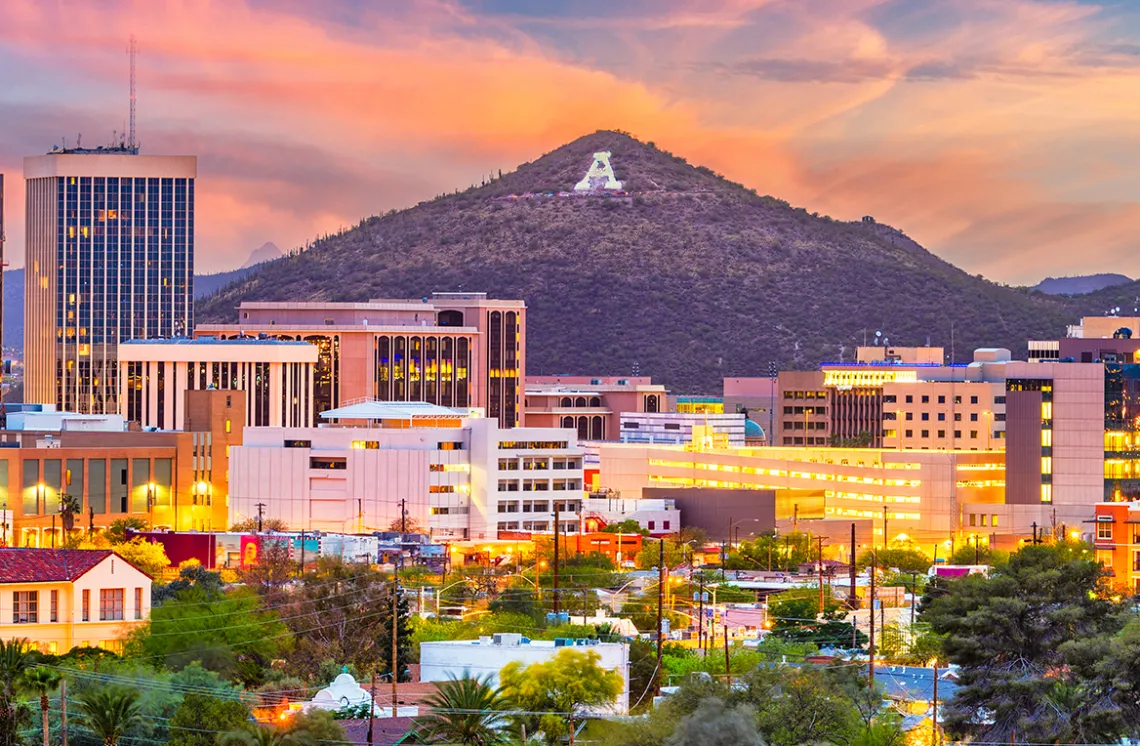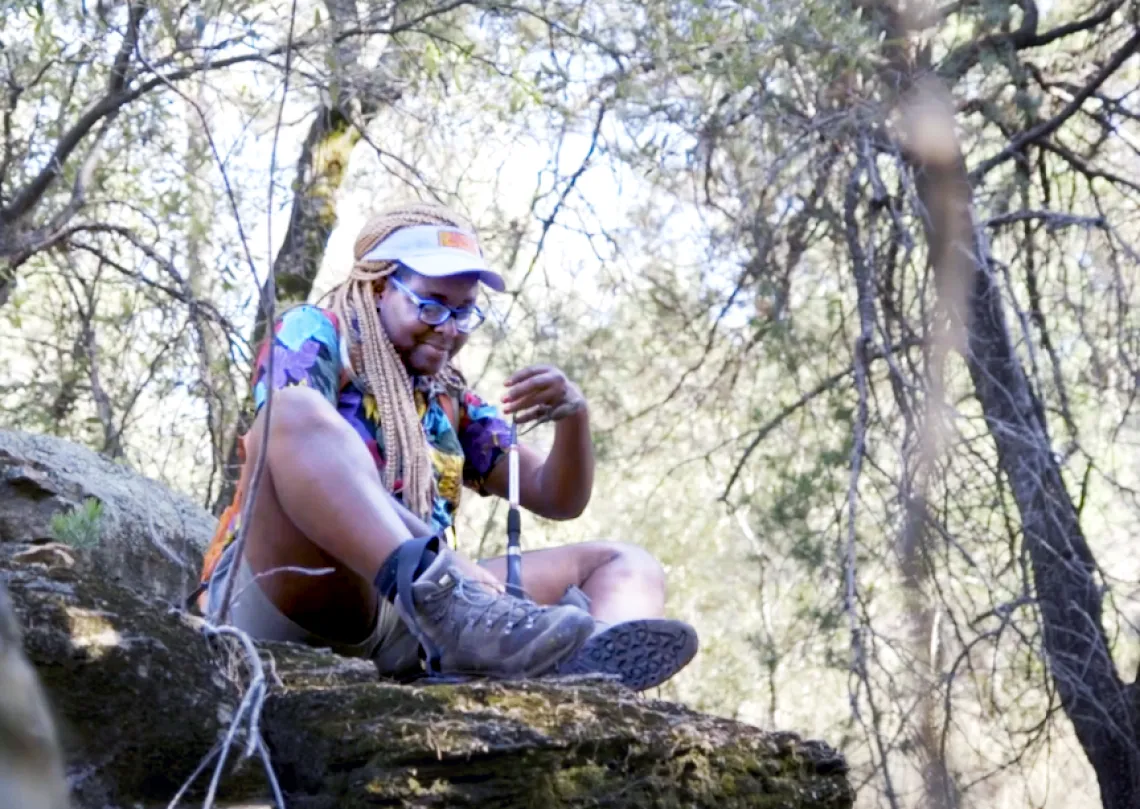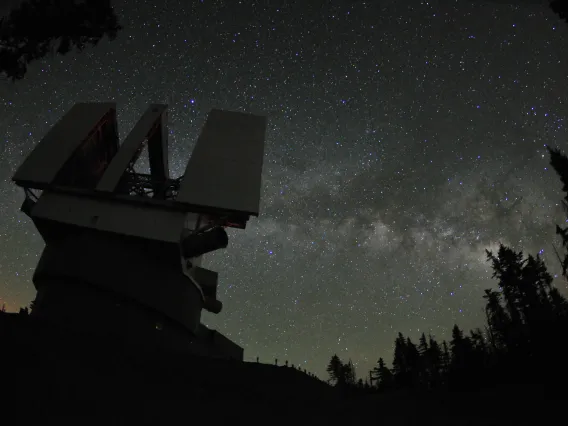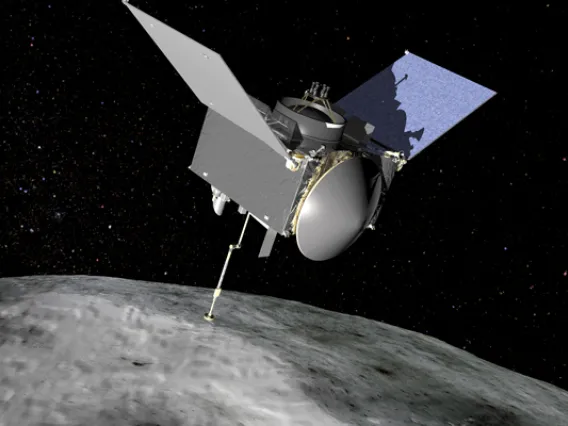
The University of Arizona is proud to support and participate in the American Geophysical Union's Fall Meeting, the world's largest and most influential gathering dedicated to Earth and space sciences. Our researchers are global leaders in atmospheric, oceanic, solid earth, and space sciences making Arizona a powerhouse in cutting edge discoveries and advancing ethical, resilient solutions to our world's most pressing problems.
The University of Arizona is proud to support and participate in the American Geophysical Union's Fall Meeting, the world's largest and most influential gathering dedicated to Earth and space sciences. Our researchers are global leaders in atmospheric, oceanic, solid earth, and space sciences making Arizona a powerhouse in cutting edge discoveries and advancing ethical, resilient solutions to our world's most pressing problems.

Join Us in Making an Impact through Research
The stakes have never been higher. Through collaboration and innovation, UArizona research has greater impacts.
Researchers at the University of Arizona make up a diverse community of people who thrive on innovation and collaboration. Many have played a part in groundbreaking projects ranging from exploring Mars and collecting an asteroid sample, to studying rainforests and oceans—outside and under 7.2MMcf of sealed glass—and using wastewater to detect COVID-19.
We bring together faculty and other researchers from disciplines spanning campus to tackle complex challenges and questions related to our world. This range of expertise, when combined, broadens opportunities for innovation and solutions with impact.
This expertise pulls from strengths at every corner of UArizona:
Space and Planetary Sciences
UArizona is home to world-renowned observatories, state-of-the-art telescopes, and leading university departments and centers carrying out research in astronomy and planetary and space sciences. We mapped the moon, lead NASA missions, build the world’s largest telescopes, and are ranked No. 1 in astronomy and astrophysics expenditures by the National Science Foundation.
- Aerospace and Mechanical Engineering
- Astronomy and Steward Observatory
- James C. Wyant College of Optical Sciences
- Lunar and Planetary Laboratory
- Physics
- Richard F. Caris Mirror Lab
- Large Binocular Telescope Observatory
Earth, Climate, Environment, Water, and Energy
UArizona is ranked as the leading university in the U.S. in water resources and among the top 30 public institutions for natural resources and conservation, geosciences, atmospheric sciences, and ocean sciences. Our research spans physical and social sciences to better understand environmental challenges and develop solutions that tangibly improve people’s resilience to environmental shocks, including those due to climate change.
- Accelerator Mass Spectrometry Lab
- Arizona Institutes for Resilience
- Biosphere 2
- Chemical and Environmental Engineering
- Ecology and Evolutionary Biology
- Environmental Science
- Geosciences
- Hydrology and Atmospheric Sciences
- Laboratory of Tree-Ring Research
- Mining and Geological Engineering
- School of Geography, Development and Environment
- School of Natural Resources and the Environment
- Udall Center for Studies in Public Policy
- Water Resources Research Center (WRRC)

Join us as we forge innovative pathways, form powerful collaborations, and make remarkable discoveries.
The University of Arizona is one of the nation's top 20 public research institutions, enabling you to work with leading researchers and providing an ideal environment for advanced study. We place high priority on interdisciplinary studies, intellectual and cultural diversity, and international exchange. The University of Arizona is a place of discovery.
Aerospace & Mechanical Engineering
College of Engineering
Astronomy and Physics
College of Science
Atmospheric Sciences
College of Science
Biosystems Engineering
College of Engineering
Chemical & Environmental Engineering
College of Engineering
Ecology & Evolutionary Biology
College of Science
Environmental Science
College of Agriculture and Life Sciences
Geographic Information Science
College of Agriculture and Life Sciences
Geography
College of Social and Behavioral Sciences
Geosciences
College of Science
Hydrology
College of Science
Indigenous Governance
College of Law
Groundbreaking projects. World-class facilities.

Biosphere 2
The world’s largest closed ecological systems experiment, Biosphere 2 is a living laboratory for controlled scientific studies of Earth systems, an arena for scientific discovery and discussion, and a provider of public education.

Large Binocular Telescope Observatory
Located in southeastern Arizona's Pinaleno Mountains at an altitude of 3200m, LBTO is headquartered on the Tucson campus of the University of Arizona. It is an international collaboration of UArizona, Italy, Germany, The Ohio State University, and the Tucson–based Research Corporation representing the University of Minnesota, the University of Virginia, and the University of Notre Dame.

OSIRIS-REx
NASA’s OSIRIS-REx is the first U.S. mission to return a sample from the surface of an asteroid to Earth for scientific study. Led by the Lunar and Planetary Laboratory, the OSIRIS-REx mission recently successfully collected more than 60 grams of loose rubble from the near-Earth asteroid Bennu.

Laboratory of Tree-Ring Research
More than 80 years ago, the scientific study of tree-rings was formalized by the creation of the LTRR, the nation’s first and largest dendrochronology lab. The world-renowned lab is responsible for many significant contributions to the field and home to the largest and most diverse collection of tree-ring specimens.

